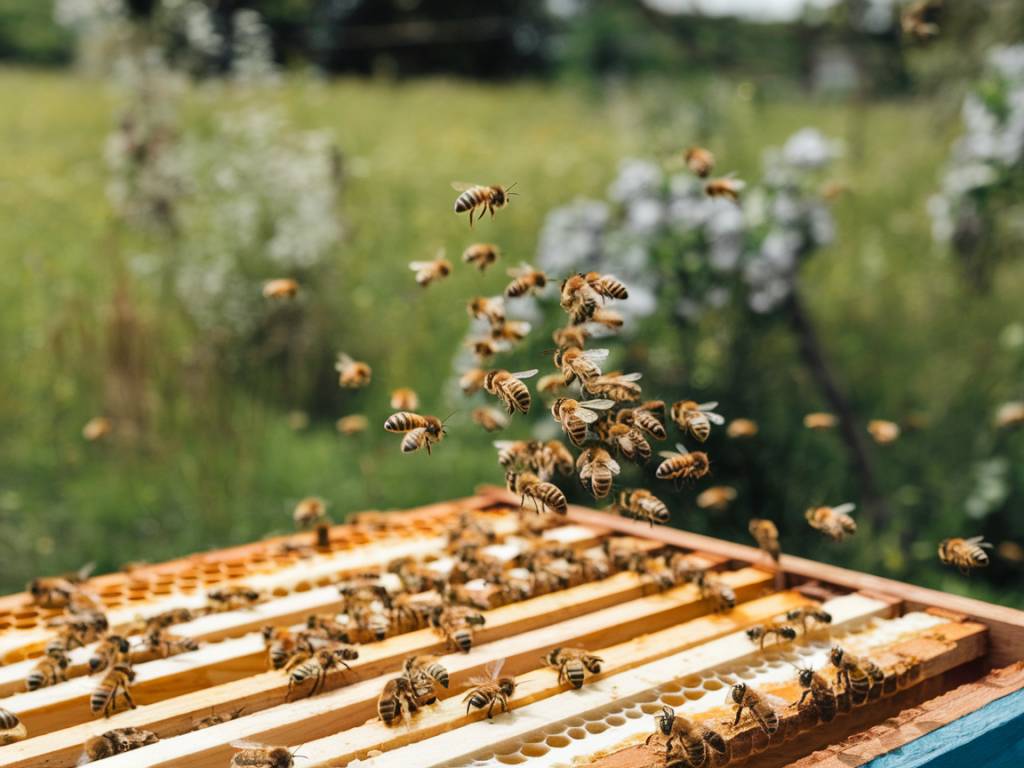
What Is Apitherapy?
Have you ever wondered how honeybees can do more than just make honey? Apitherapy is the practice of using bee products like honey, propolis, royal jelly, bee pollen, and even bee venom to support natural health remedies. This centuries-old approach taps into the incredibly diverse range of benefits these products offer, making it an alluring option for anyone seeking holistic wellness solutions.
The name itself comes from the Latin word « apis, » meaning bee, and it’s a practice that combines nature’s simplicity with science’s complexity. The idea? Utilising products straight from the hive to promote healing, well-being, and balance in your life. But how exactly does it work, and is it worth the buzz? Let’s dive in.
Why Bees Are Nature’s Little Pharmacists
Bees do far more than pollinate your flower garden. The products they create are packed with bioactive compounds that can benefit the human body. For instance:
- Honey: A natural antibacterial and antioxidant powerhouse, honey has been used for centuries to heal wounds, soothe sore throats, and even boost energy.
- Propolis: Sometimes called « bee glue, » propolis has antifungal, antiviral, and anti-inflammatory properties. It’s often used to support immunity.
- Royal Jelly: The food that nourishes the queen bee, royal jelly is rich in amino acids, vitamins, and minerals and is believed to promote everything from skin health to improved brain function.
- Bee Pollen: Packed with protein, vitamins, and enzymes, bee pollen is sometimes referred to as “nature’s multivitamin.”
- Bee Venom: While it might sound intimidating, bee venom has shown promise in reducing inflammation and alleviating symptoms of conditions like arthritis and multiple sclerosis.
Each of these products carries its own unique lineup of benefits, making apitherapy a versatile approach to natural health remedies.
Common Uses for Apitherapy
Apitherapy is not just a concept; it’s a set of practical applications that can be seamlessly incorporated into your daily life. Here are a few examples:
1. Enhancing Wound Healing
If you’ve ever dabbed a bit of honey on a cut or scrape, you’re already practicing a form of apitherapy. Medical-grade honey, such as Manuka honey, is widely recognised for its antibacterial properties. It can protect wounds from infection while also promoting faster tissue repair.
2. Boosting Your Immune System
Feeling under the weather? Propolis is often hailed as a natural immune booster thanks to its antimicrobial properties. Many people use propolis sprays or lozenges to ward off colds and flu.
3. Managing Joint Pain
Bee venom therapy, while not for the faint of heart, has gained popularity among those suffering from arthritis or chronic pain. The venom contains compounds that may reduce inflammation and improve circulation.
4. Supporting Skin Health
Royal jelly and honey are common ingredients in skincare products for good reason. They’re known to hydrate, repair, and rejuvenate the skin, making them excellent choices for anyone dealing with dryness or premature aging.
What Science Says About Apitherapy
While apitherapy has deep roots in traditional medicine, it’s also gaining traction in the scientific community. Numerous studies have examined the efficacy of bee products for various health concerns. For instance:
- A 2018 study published in the journal Aging Clinical and Experimental Research found that honey’s antioxidants can help reduce oxidative stress, which is linked to chronic diseases like diabetes and heart conditions.
- Research in the journal Phytomedicine highlighted propolis as a potential agent against upper respiratory infections thanks to its antiviral properties.
- A 2021 review in Frontiers in Pharmacology noted the anti-inflammatory benefits of bee venom, suggesting it may be a useful treatment for autoimmune disorders.
But let’s not forget the caveat: more research is needed to fully understand the scope of these benefits. As with any health remedy, individual responses can vary, and it’s essential to consult with a healthcare professional before diving headfirst into apitherapy.
How to Get Started with Apitherapy
Interested in giving apitherapy a try? Here’s how you can incorporate bee-powered wellness into your life:
- Local Honey: Start by adding raw, unpasteurised honey to your diet. Use it as a natural sweetener in your tea or drizzle it over oatmeal for added flavor and health benefits.
- Bee Pollen: Sprinkle a teaspoon of bee pollen into your yogurt or smoothie. Just remember to start small, especially if you have pollen allergies.
- Propolis Tinctures or Sprays: Keep a bottle on hand for seasonal changes or whenever you feel your immune system needs a boost.
- Royal Jelly Supplements: Available as capsules or in fresh form, these can be a luxurious addition to your health regimen.
- Skincare Products: Look for creams or serums containing honey or royal jelly to support your skin’s natural glow.
If you’re considering bee venom therapy or other specialised treatments, it’s best to consult with a trained professional to ensure safety and effectiveness.
Are There Any Risks?
As wonderful as apitherapy sounds, there are some precautions to keep in mind. For instance:
- Allergies: If you’re allergic to bees or bee products, apitherapy may not be for you. Always do a patch test or consult your doctor beforehand.
- Dosage Matters: More isn’t always better. Consuming too much honey or royal jelly, for example, can lead to digestive discomfort.
- Specialized Treatments: Bee venom therapy should always be performed under the guidance of an experienced practitioner to avoid adverse reactions.
It’s always a good idea to do your homework and approach apitherapy with a mix of curiosity and caution.
A Final Word: The Beauty of Bees
Apitherapy isn’t just a health trend; it’s a tangible reminder of how interconnected we are with nature. From the antibacterial properties of honey to the rejuvenating qualities of royal jelly, bee products offer a treasure trove of benefits worth exploring. They bridge the gap between traditional remedies and modern wellness, proving that sometimes, the simplest solutions are the most effective.
So, the next time you see a honeybee buzzing about, take a moment to appreciate its incredible contributions—not just to the environment but to our health and well-being. Who knew such tiny creatures could make such a big impact?


